- Home
- Winston Groom
1942: The Year That Tried Men's Souls Page 18
1942: The Year That Tried Men's Souls Read online
Page 18
Moreover, the Japanese had all sorts of tricks up their sleeves. To rattle and wear down the Americans, the Japanese developed a catapult device that hurled strings of firecrackers toward U.S. lines at all hours of the night, putting everybody on edge. They used powerful loudspeakers to blare irritating music and surrender pleas through the jungle. They employed large numbers of suicidal snipers who tied themselves in treetops and picked people off until they themselves were killed. It was not the kind of warfare the Americans and their Filipino friends had trained for but, as with the supposedly dead Japanese soldier, they learned it anyway—the hard way.
Both sides by now were exhausted, like two panting, bloodied beasts who lay glaring at each other, gathering strength so they could go at it again. The problem was that the American forces were not gathering strength; they were losing it. The food shortage, which had been critical, was now acute. The Twenty-sixth Cavalry, which recently conducted the last cavalry charge in modern history, tearfully killed the rest of their horses and ate them. The horses had consumed the last of the grain and shucks on Bataan and were themselves starving. Men shot monkeys from the trees and ate them. One officer bitterly complained that some joker had secretly put a “hairy monkey paw” into a pot of monkey soup they were cooking. By then they had killed all the carabao (a sort of water buffalo) on the peninsula. General Wainwright reported: “We would soak the tough old meat in salt water overnight and beat it for extended periods, but even then it was a test for the strongest teeth.” The quartermaster reported: “One Filipino caught a snake and ate it one day to die unpleasantly the next. There were always plenty of experimenters ready to try any kind of native flora or fauna, although the experimenting individual frequently paid a high price.”26
Food became an obsession with almost everyone. Americans who weighed 170 to 200 pounds were down to around 150 within the month. The Filipinos did not suffer as much, since they were smaller and required less food. Soon everyone’s clothes hung off them like a scarecrow, that is, what was not already in tatters or rotten from the harsh jungle fighting. As they were slowly starving, Americans and Filipinos alike fell prey to an assortment of disgusting tropical diseases: malaria, dengue fever, scurvy, beriberi, hookworm, amebic dysentery, edema, and night blindness. At any given time there were ten thousand patients in Bataan’s two military hospitals. Both of these institutions were marked with large red crosses on their roofs. Japanese planes bombed them anyway and soon the crosses were removed; they were just being used for target practice. Another frightening problem was gas gangrene. Although in the period between the wars medical science had developed antitoxins for this dread complication, many wounded men had to have limbs amputated because the antitoxins were unavailable on Bataan.
Probably half the soldiers on the front lines were unfit for duty, but they stayed there anyway. At first morale had been high, but constant hunger was making its inevitable inroads. A week after he and his troops had arrived on Bataan MacArthur sent out a message to all troops: “Help is on the way from the United States. Thousands of troops and hundreds of planes are being dispatched.” MacArthur’s proclamation was at the least disingenuous; he was in contact with Washington and knew what the score was. He saved himself from being branded a liar by not revealing the timetable for this great relief expedition. (It did not arrive until three years later.) Wainwright put it this way: “When we first heard that, some of the men wept for joy. The joy did not last long.” A war correspondent composed this darkly popular tune:
We’re the battling bastards of Bataan:
No momma, no poppa, no Uncle Sam,
No aunts, no uncles, no nephews, no nieces,
No rifles, no guns or artillery pieces.
And nobody gives a damn.
It wasn’t that the military authorities in Washington weren’t trying; it was just that there wasn’t much they could do. But to this end it was decided by General Marshall, who received daily, depressing reports from the Philippines that the soldiers were starving, that at least something had to be done. Though it was apparent that the navy could or would not try to break through the Japanese blockade, toward the end of January a seat-of-the-pants scheme was hatched. Small ships procured in Australia or the Netherlands East Indies would be loaded with food and ammunition and run the fifteen-hundred-mile-long gamut of Japanese warships and planes. The notion was to get three million rations to Bataan—a two-month supply—within three weeks.
Organizers of this bold and hazardous attempt immediately ran into trouble. First, there were few steamers in Australia and the Dutch Indies with enough speed and fuel capacity to reach the Philippines. Still, about a dozen were rounded up and their crews offered fantastic bonuses and life insurance policies for making the dangerous trip. Five days after the first two of these ships sailed, the Japanese discovered and sank them. Three others actually made it to the lower Philippines while two more were taken over and returned by mutineers when they reached Japanese-controlled waters. Another three never left port in Australia and one that did was never heard from again.
Then there was the tricky problem of getting to the cargoes of the three ships that made it through the fifteen hundred miles of Philippine Islands that separated the southern Philippines from Bataan. Smaller, faster inter-island boats were used for this and the cargoes were unloaded, then reloaded upon them. They traveled only at night, hiding during the day wherever they could. Ten of the cargo boats were discovered and sunk by the Japanese, who were flying overhead night and day, and in the end only about a thousand tons (a four-day supply) ever reached the starving men on Bataan. One of those that made it was described this way by an army captain: “Part of its bow was blown away. Its decks and sides were riddled with shell fragments. Its captain and half the crew were dead. Ninety percent of its rice was floating in sea water.”27 Official army historian Louis Morton labeled the blockade-running scheme “a dismal failure.”28
Within a month further Japanese conquests in the southwest Pacific had rendered Australia unsuitable for blockade running, so it was decided to try the long cross-ocean route from the U.S. West Coast. Six old World War I destroyers were converted to carry cargo but none got any farther than Pearl Harbor. Submarines were also used for cargo but they could not carry much. On one trip the U.S.S. Spearfish returned from Corregidor with a dozen American army nurses whom they’d gotten safely off the Rock. (This feat later became an inspiration for the 1959 Cary Grant movie Operation Petticoat.)
Meantime, Corregidor itself was taking a tremendous beating from aerial bombing. Before the war the nearly two-thousand-acre Rock had been an almost idyllic place where wealthy Filipino families vacationed for the summer. There was a golf course and a large army barracks and parade ground. Fruit trees, flowering plants—orchids and hibiscus among them—and coconut palm trees abounded. An electric funicular railway ran from the five-hundred-foot-high northern heights (topside) down to loading docks on the shore (bottomside). At that point, Corregidor contained nearly 10,000 U.S. troops and civilians.
The nerve center for Corregidor lay within the labyrinthine confines of the Malinta Tunnel, completed in the 1920s. This bomb-impervious structure carved through the stone and dirt that composed Malinta Hill was nearly a quarter mile long with about fifty laterals, or branches, some of which were as long as four football fields. In this complex reposed such varied operations as headquarters, a hospital, food service and stores, a radio station, a barber shop, gasoline and ammunition storage, repair shops, and sleeping quarters for officers and selected noncoms.
MacArthur and his people had been there less than a week when Japanese planes attacked Corregidor in force. Day after day hundreds of twin-engine bombers (called Sallys by the Americans) dropped thousands of bombs ranging from 100 to S00 pounds, hoping to re-create another Pearl Harbor, Cavite, or Clark Field and bring the Americans to their knees. In this they were bitterly disappointed. Though the raids made the inhabitants plenty uncomfortable, the tunnel was bomb-proo
f. One day MacArthur, who spurned the tunnel as shelter, went out during an air raid and began counting the number of Japanese planes dropping bombs. Members of his staff were horrified, though they themselves were pressed nose to ground in nearby slit trenches. As the bombs began falling closer MacArthur’s orderly, a Filipino sergeant named Adversario, tried to shield MacArthur with his body. When MacArthur refused to put on a steel helmet Adversario held his own helmet over the general’s head until a bomb fragment wounded him in the hand. When the raid was over MacArthur, in disgust, ordered his headquarters and his wife and son into the tunnel. He was brave, but not stupid.
As the raids continued day after day the island quickly began to lose its charm. The golf course was ruined and the trees and bushes stripped of their vegetation. The barracks and other buildings were blown up, the parade grounds ruined, and the electric train cut up. Life in the tunnel was miserable. Clouds of dust from exploding bombs choked those inside; the electricity went out, leaving everyone in the dark. Air in the tunnel was fetid and nurses from the hospital regularly brought less seriously wounded men outside the tunnel entrance for a little fresh air. Flies swarmed over them but they chose to remain until the next Japanese attack, when they were dragged back inside. People who sought shelter in the tunnel began to wonder about its safety. Some saw places in the ceiling where the stone had cracked and foul-smelling water drained down. The entrance to the hospital lateral was drenched in the blood of wounded soldiers, sailors, and marines. Often ambulances would wait to pick up blanket-covered corpses, which would be buried between attacks.
Newspaperman Carlos Romulo had by now joined MacArthur at Corregidor as a press aide and was given the rank of major. He had just emerged from the tunnel after the latest bombing attack when he came upon an American soldier he knew, a Private Hamby, who was crying. Romulo asked what was wrong. “He had a lot of trouble telling me. It seems he had just been out on hospital detail and had pulled a man’s leg out of a rubbish heap that ten minutes before had been an anti-aircraft battery. It came away in his hand—a flesh and blood human leg. He was standing staring at it when something moved under the rubble. He dug up the rest of the man. It was his best friend, who Hamby had enlisted with back in the states. What was left of the boy grasped Hamby’s hand, then he died.”29
About the only bright spot in the tunnel was when MacArthur’s four-year-old son Arthur, dressed in a sailor’s suit, would respond to the siren by rushing up and down the tunnel shouting, “Air raid! Air raid!” At least it made some people chuckle.
Romulo remembered MacArthur’s canny analysis at the time of the Japanese theory of warfare. “It is a reckless method,” the general said. “The Japanese don’t care how many thousands die, if only they can win quickly. They can’t win a war of attrition and they know it. That is why for insignificant skirmishes where I would not want to lose a single life, they will sacrifice thousands of lives.”30
It was all too true. With the U.S. establishment of the last-ditch Bagac Line, MacArthur knew he was trapped and faced annihilation. He wired Marshall in Washington: “With its [the Bagac Line] occupation, all maneuver possibilities will cease. I intend to fight it out to complete destruction.” Marshall obviously was not pleased, but neither was he totally distraught, because he kept telling MacArthur that the longer he could keep the Japanese in the Philippines at bay, the longer it would be for them to be able to send those troops to conquer something else.
By now Homma’s fifty-day deadline to capture the Philippines was drawing to a close, so he resorted to a bold flanking tactic, similar to those employed by Yamashita in Malaya. On January 24 he sent some hundreds of soldiers in landing barges all way around the American positions to land at four or five points on the southwest of Bataan. These were fingers of land that jutted out into the China Sea, and if the plan had succeeded U.S. forces would have a large force of Japanese behind them as well as in front. But the Battle of the Points did not succeed. As the Japanese came ashore they ran into a fierce defense by a single battalion of American infantry, and after twelve blood-drenched days the Japanese force was annihilated. This did not come without a price. The American battalion had gone into battle full strength, with six hundred officers and men. It came out with only 212 men, commanded by a lieutenant because all the other officers were killed or wounded, including the battalion commander, who was shot through the head. “Every other officer and man was accounted for as having been buried or evacuated wounded. There were no stragglers,” Wain-wright reported.31 At about the same time as the Battle of the Points came the Battle of the Pockets.
When Homma discovered that MacArthur was pulling back he ordered his field commander to closely pursue the Americans and not give them a chance to dig in. They hugged the Americans tightly through the maze of bamboo thickets, creepers, vines, and jungle brush, all the way to the Bagac Line, and, in so doing, created several “pockets,” which were actually a mile behind the U.S. main line of resistance. These pockets also took twelve days to annihilate, at great cost to the Americans because the Japanese had dug tunnels and so were almost impossible to ferret out. The U.S. forces did so by dropping bags of hand grenades into the tunnels and fighting with the Japanese hand to hand.
By now many American commanders, especially those who had served in World War I, were beginning to realize that they were fighting an entirely new kind of enemy. Wainwright addressed himself to this fact: “The old rules of war began to undergo a swift change in me. What had at first seemed a barbarous thought in the back of my mind now became less unsavory. It had at last dawned on me, as it would on so many commanders who followed me into the Pacific, that the Jap usually prefers death to surrender.”
As the Battles of the Points and the Pockets drew to a close, Homma decided he had had enough for the present. These two actions had cost him thousands of men, practically all of them killed; his offensive on Bataan was getting nowhere. Accordingly, on February 8, he ordered his entire army to withdraw back up the peninsula for reorganization. At the same time, with his fifty-day deadline expired, he asked Tokyo to send him more troops. Alarmed and irritated by Homma’s lack of progress, Imperial General Headquarters complied by transferring troops from China, but clearly they were unhappy with Homma’s performance. To that end they also sent him the ubiquitous Colonel Tsuji who, during his stay in Singapore, had incited the murder of more than five thousand Chinese (whose severed heads were stuck up on pikes around the city) on grounds they had been supporting British colonialism.32
Meantime, a perplexing question arose in Washington: With the Philippines clearly on the verge of collapse, what should they do with MacArthur? The spectacle of him being paraded in irons through the streets of Tokyo was bad enough. And what if he should die with his men, as he had promised? The army would lose one of its most prestigious and brilliant commanders. It was a sticky problem because no one knew how to tell MacArthur he would have to leave Corregidor; the general himself would certainly see it as the blackest mark in his long career, virtually a desertion of his troops in the face of the enemy. It was decided that President Roosevelt himself would give the order, which he did on February 23, telling General MacArthur he was to go to Australia and assume command of all new U.S. forces bound for the Far East.
As expected, MacArthur protested but in the end was forced to see the logic of the order. On March 12, rather than wait for a submarine the navy was sending to take him away, he boarded the PT boat commanded by Lieutenant John D. Bulkeley and, with his wife and son and seventeen of his staff members, roared off into the night. The plan was to take MacArthur six hundred miles south to the large island of Mindanao where, from an airfield on the Del Monte pineapple plantation, he would meet four B-17s sent from Australia to complete his deliverance. But all this was easier said than done.
There were four PT boats in the little flotilla. Normally they could make about 50 knots, but because they were so long out of overhaul they could make only half that speed. Next they had t
o thread their way through the Japanese blockade, including a heavy cruiser that could have blown them out of the water anytime it wanted, and they had to hide from a Japanese destroyer in broad daylight. Worse were the extremely rough seas, which separated the flimsy wooden PT boats and tossed them about like corks. Almost everyone got seasick and MacArthur himself described the voyage as being like “spending two days inside a cement mixer.”
Playing hide-and-seek with Japanese planes and ships, laying up under cover of coves in daytime, navigating without proper charts, Lieutenant Bulkeley’s flotilla reached Mindanao at dawn of March 14 and were taken to the Del Monte plantation where, instead of meeting four B-17s, they found only one plane—two were missing and a third had crashed. Even the one that had arrived was in bad shape. MacArthur was furious and demanded in a missive to Washington that “the best three planes in the United States or Hawaii should be made available.” He further stated that to fly on such planes as had been sent “would amount to consigning the whole party to death and I could not accept such responsibility.”
Presently three brand-new B-17s arrived and by nine A.M., March 16, MacArthur and his party were safely in Darwin, Australia—or so they first thought. They had landed just in time for a major Japanese air raid on that city, which caused them all to flee inland, but not before MacArthur made his famous proclamation, “I came through, and I shall return.”* MacArthur waxed stoic about the whole thing, telling his traveling companions, “It was close, but that’s the way it is in war. You win, you lose, live or die—and the difference is just an eyelash.”33

 El Paso
El Paso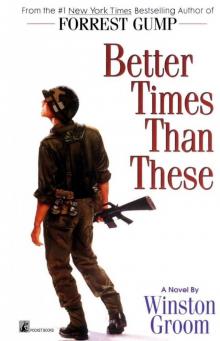 Better Times Than These
Better Times Than These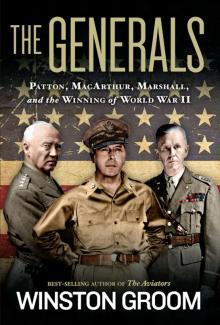 The Generals
The Generals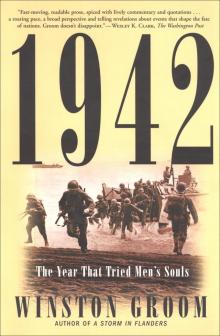 1942: The Year That Tried Men's Souls
1942: The Year That Tried Men's Souls Forrest Gump
Forrest Gump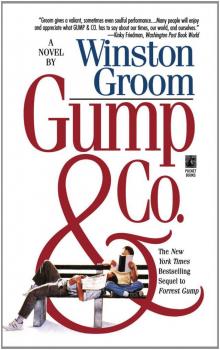 Gump and Co.
Gump and Co.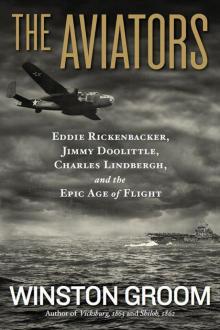 The Aviators
The Aviators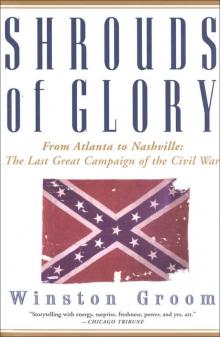 Shrouds of Glory
Shrouds of Glory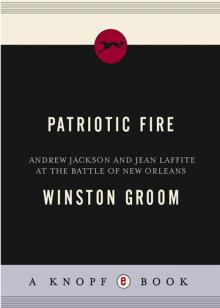 Patriotic Fire
Patriotic Fire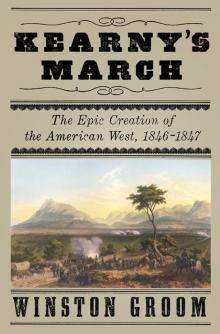 Kearny's March
Kearny's March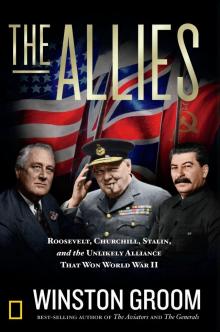 The Allies
The Allies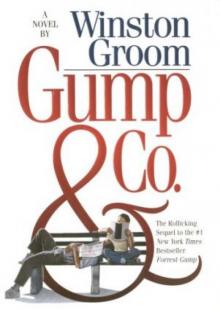 Gump & Company fg-2
Gump & Company fg-2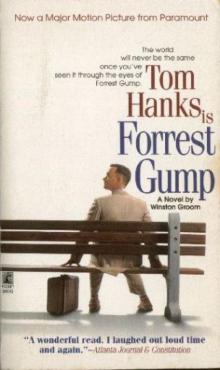 Forrest Gump fg-1
Forrest Gump fg-1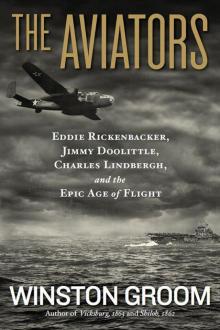 The Aviators: Eddie Rickenbacker, Jimmy Doolittle, Charles Lindbergh, and the Epic Age of Flight
The Aviators: Eddie Rickenbacker, Jimmy Doolittle, Charles Lindbergh, and the Epic Age of Flight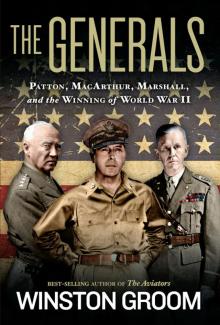 The Generals: Patton, MacArthur, Marshall, and the Winning of World War II
The Generals: Patton, MacArthur, Marshall, and the Winning of World War II